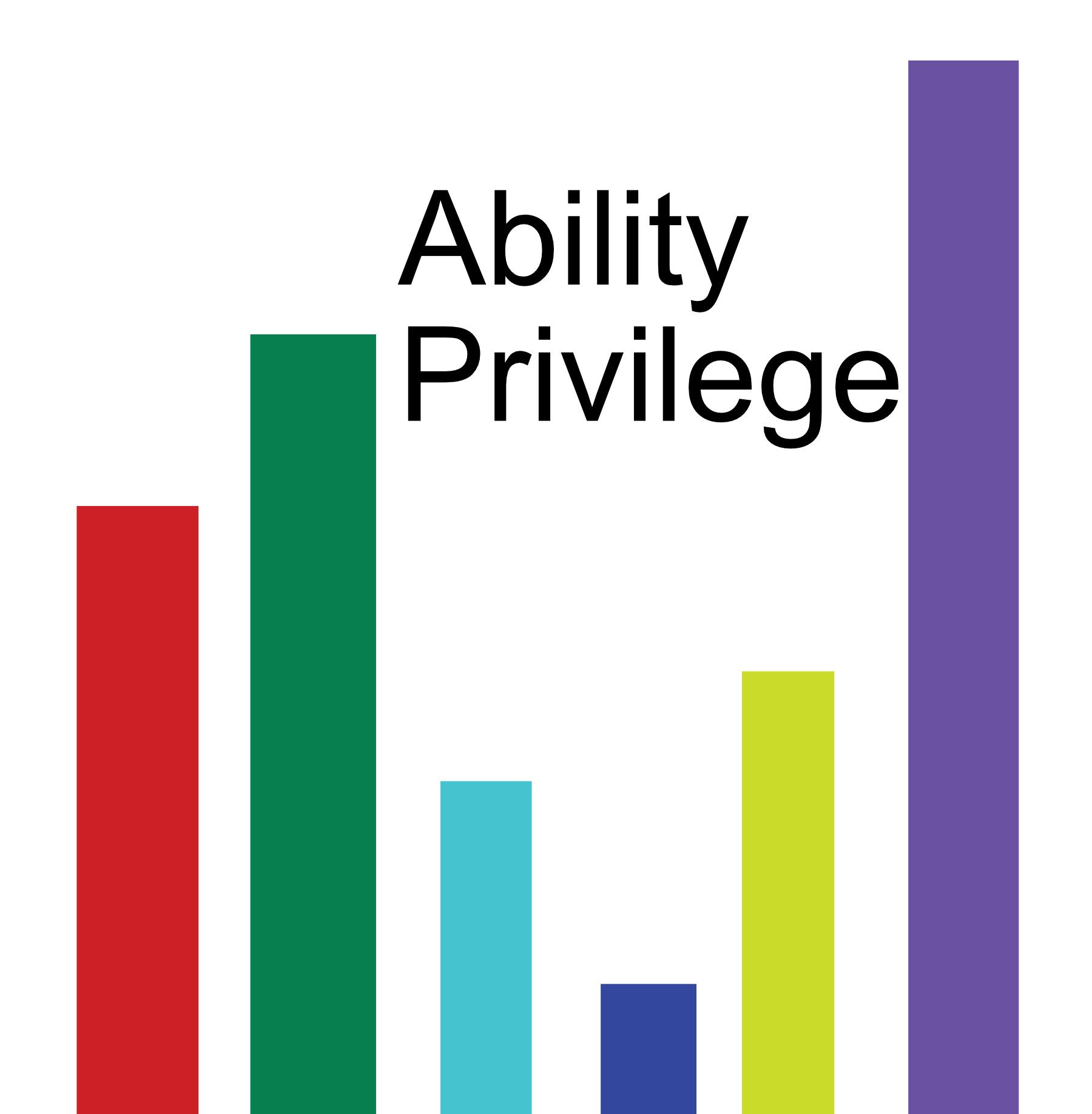
Ability Privilege Lesson
This activity is designed for students to reflect on their own lives and their privilege status. Unfortunately in our society certain groups can navigate with ease, while others must fight for their basic rights. Students will reflect on how their ability (able-bodied or disabled) affects their lives and how they can use their privilege to help others.
Image Description: various heights of different colored bars lined up next to one another. The words “Ability Privilege” towards the top.
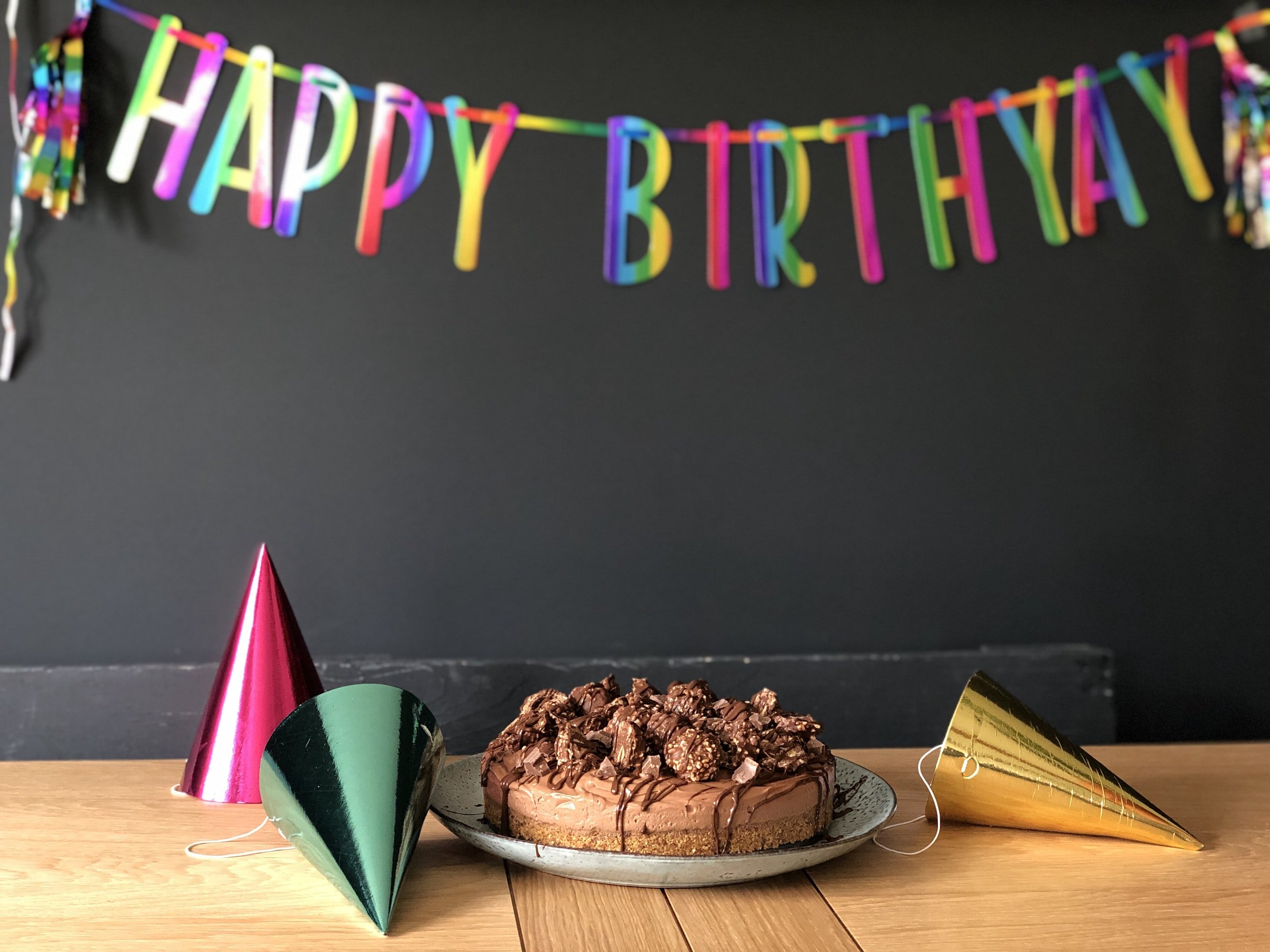
Birthday Party Lesson Plan
In this lesson, students will consider what accommodations they can make in order to be more inclusive of their peers with disabilities.
Image description: Photo of cake, birthday hats and Happy Birthday banner

Come Over to My House Lesson
Students will participate in an interactive read-aloud and discussion of the picture book “Come Over to My House” by Eliza Hull and Sally Rippin, exploring its representation of disabilities. They will respond to a writing prompt inspired by the book and create artwork to accompany their writing. The lesson concludes with reflective questions and optional follow-up activities to address student inquiries.
Image Description: Cover of a children's book titled "Come Over to My House." It features a group of children and a dog and 2 adults at an open door. One child is in a wheelchair, another is upside down, and there is a dog sitting in the middle. The children are smiling and appear welcoming.
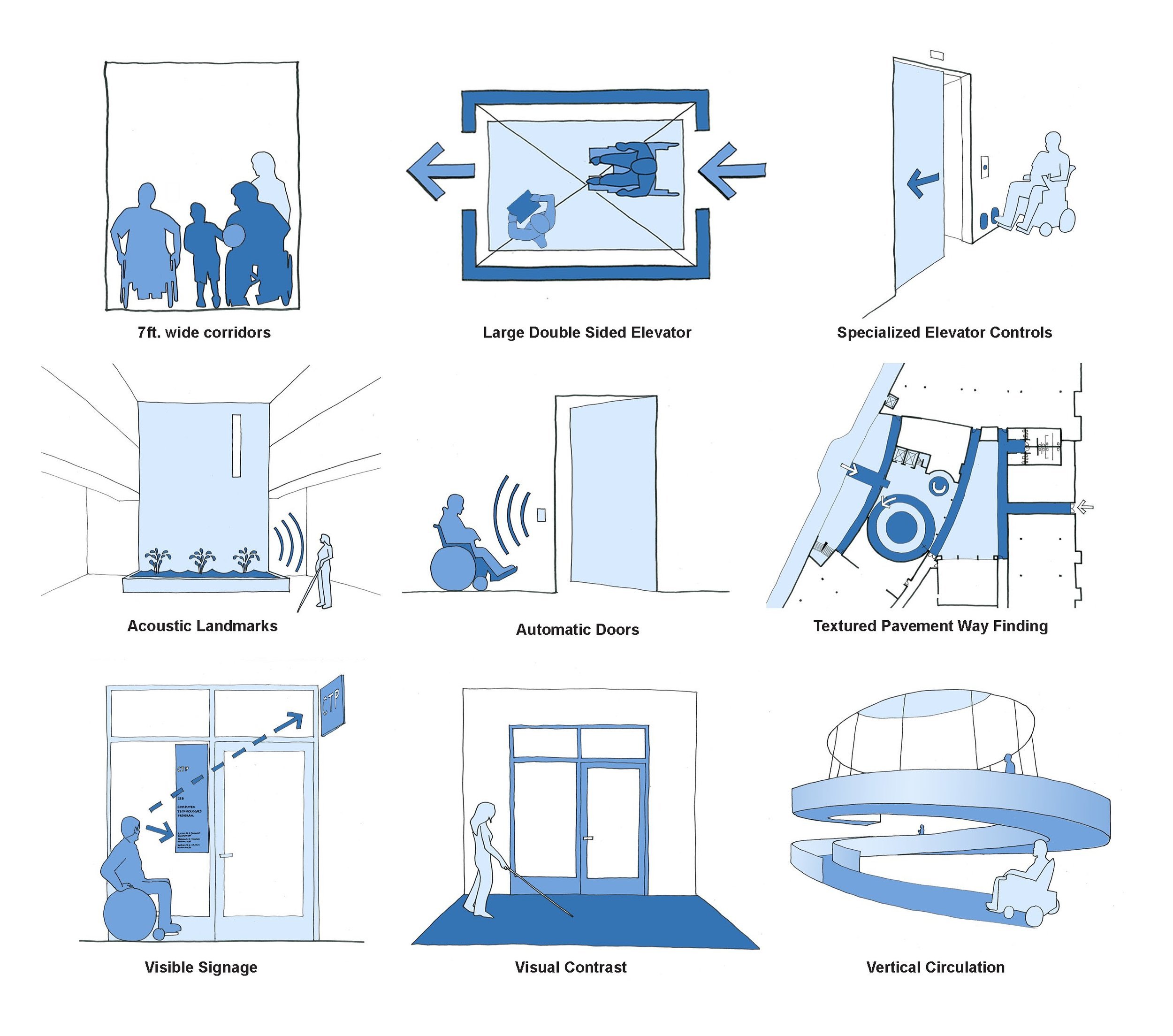
Designing with Disability in Mind
This lesson plan combines geometry with social awareness by exploring some of the principles of universal design and accessibility.
Over two class periods, students review key geometric concepts such as area, perimeter, and volume, and apply these concepts to redesign public spaces to meet accessibility standards. Through video content, class discussions, and hands-on design activities, students learn the importance of creating inclusive environments for people with disabilities. To share their work and demonstrate their learning, students will engage in a “gallery walk” to debut their group presentations of redesigned floor plans.
Image Description: Graphic showing 9 features of accessible design used at the Ed Roberts Campus
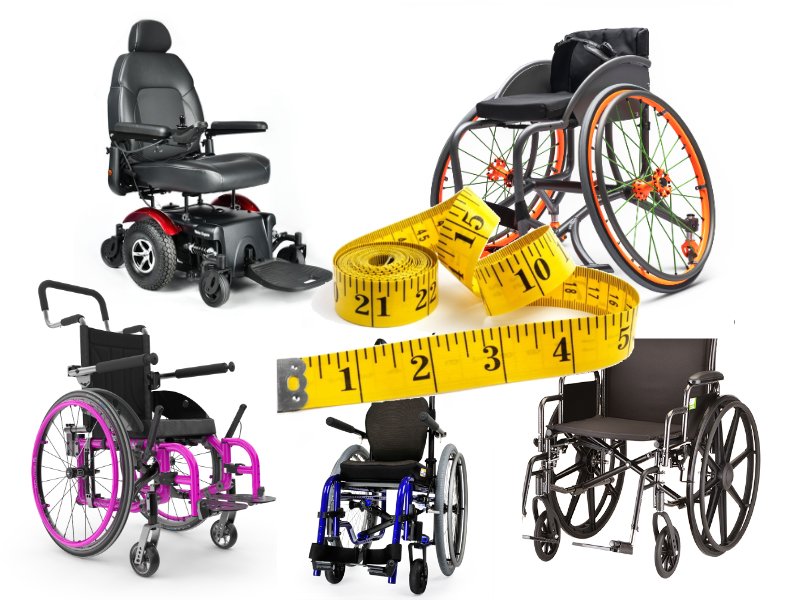
Measurement Lesson Plan
This lesson will help teach measurement by having students estimate the width of doorways and then measure doorways to determine if they are wide enough to meet ADA standards.
Image description: 5 wheelchairs with a yellow tape measure curled over them

The New York Times - ‘26.2 Miles Is Easy. Getting Around New York City Is Not.’ - Lesson Plan
In this lesson, students will learn why it’s easier for one athlete to win a marathon in New York than to navigate the city in a wheelchair. Then, students will evaluate the accessibility of public spaces where they live.
Image Description: "The Learning Network Teaching & Learning with the New York Times" Below the text is a photograph of Daniel Romanchuk in his racing wheelchair crossing a busy street at a crosswalk.

The New York Times - ‘The Hidden Image Descriptions Making the Internet Accessible’
In this lesson, students will learn about alt text, and image descriptions that help people who have low vision or are blind to use the internet. Then, they will practice using the feature.
Image Description: "The Learning Network Teaching & Learning with the New York Times" Below the text is the Mona Lisa with 3 examples of alt text descriptions from Microsoft Word, Facebook and Wikipedia.

New York Times: Learning With: ‘Adaptive Video Game Controllers Open Worlds for Gamers With Disabilities’
This lesson explores how adaptive video game controllers are transforming gaming for players with disabilities. Students will first reflect on their own gaming experiences before analyzing a commercial and reading an article about accessibility in gaming. Through discussion questions, they will examine the challenges faced by disabled gamers, how technology has evolved to be more inclusive, and the broader impact of adaptive controllers. The lesson encourages critical thinking about accessibility in technology and invites students to consider how they would design more inclusive gaming experiences.
Image Description: "The Learning Network Teaching & Learning with the New York Times" Below the text is a photo of Erin Hawley playing video games with her family. She uses an adaptive controller.
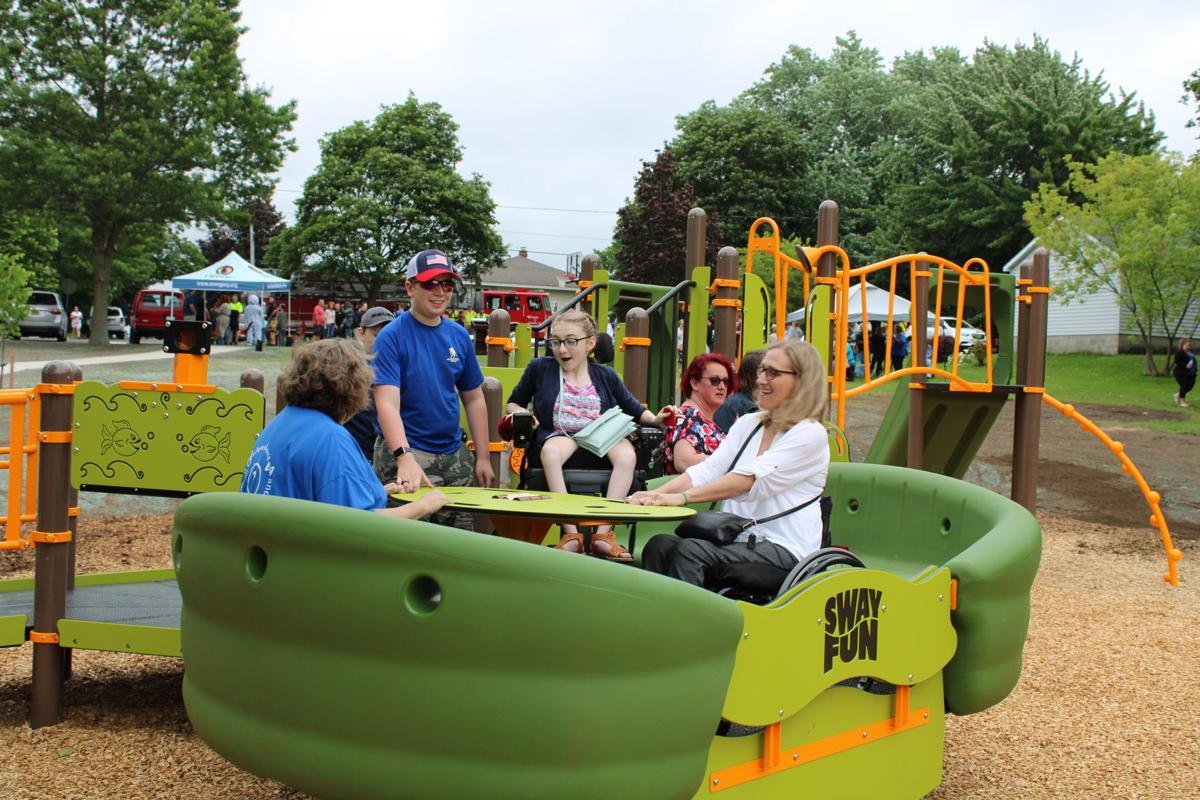
Play Map: Designing Inclusive Spaces
Students will map out where they have recess. Students will be asked to reflect on the physical accessibility of their environment (i.e. 3 steps to go from classroom to outside, playground has woodchips and a step up). They will draw out a map for their current environment and then create new map that is a inclusive play area.
Image description: wheelchair accessible playground equipment and people playing on it
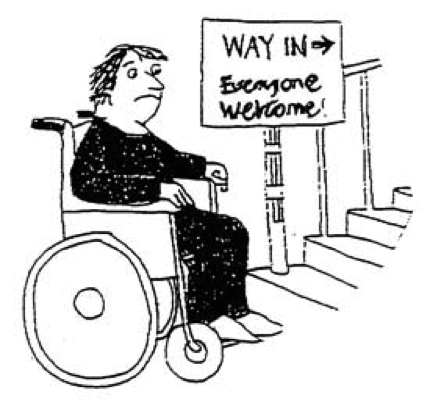
The Social Model of Disability
This links to our Social Model of Disability resources page which contains videos and examples of how to introduce and teach the Social Model of Disability.
Image description: Illustration of a person seated in a wheelchair at the bottom of a set of stairs. There is a sign at the bottom of the stairs pointing to the stairs that says “WAY IN Everyone Welcome!”

Social Model and Accessibility Proposal
In this lesson students will survey their school environment, learn from a person(s) with a disability and research accessibility in schools. Students will have a chance to ask the speaker(s) questions and have a discussion with speaker(s) about the Social Model of Disability. They will use the information collected to design a brand-new school building with full accessibility for people with disabilities.
Image description: Illustration of a person seated in a wheelchair at the bottom of a set of stairs. There is a sign at the bottom of the stairs pointing to the stairs that says “WAY IN Everyone Welcome!”
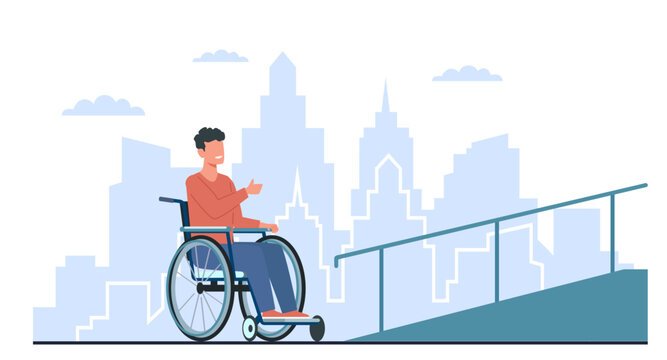
Understanding Ramp Slope and Disability Accessibility
In this lesson, students will explore the concept of slope, learn to calculate it using coordinates, and graph linear equations. They will apply this knowledge to real-world scenarios, such as designing wheelchair ramps, and emphasizing accessibility. Additionally, students will learn about universal design principles and the importance of considering people with disabilities in their designs.
Image Description: graphic of a person seated in a wheelchair at the base of a ramp with a handrail. A faded city skyline is in the background.
